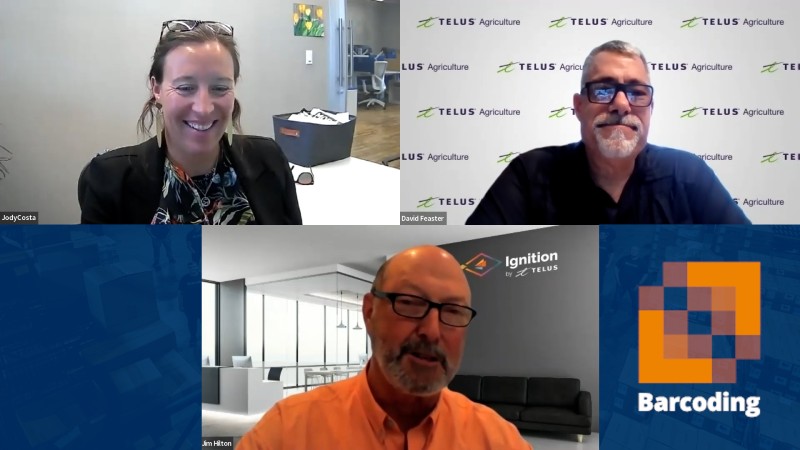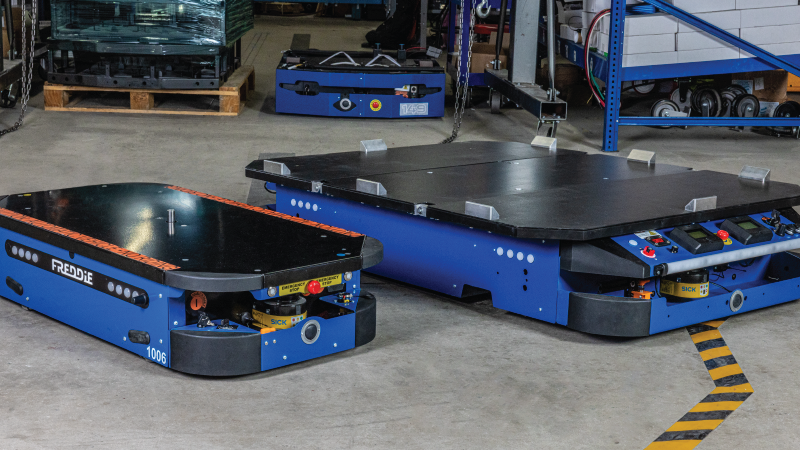Right now, nearly everyone is looking for ways to do more with less. Consumer expectations are high, even as labor and supply chain challenges are making them harder to meet.
An order management system (OMS) is one vital tool that can help sales and service teams deliver excellent customer experiences without exhausting resources.
For our July Huddle, we welcomed experts from strategic partner Ignition by TELUS for a deeper dive into order management systems and the ways mobility and automation can transform sales and service capabilities.
You can catch up fast by reading the review that follows here and highlights key points and perspectives from:
- Jody Costa, VP of Marketing and Strategic Partnerships, Barcoding
- Jim Hilton, Director – Product and Sales Strategy, Ignition by TELUS
- David Feaster, OMS Solution Principal, Ignition by TELUS
But be sure to get the full scoop and a better understanding of the ways an order management solution can help your teams by watching the video, too!
What is an Order Management System?
As more industries move toward omnichannel sales, disparate solutions that address only one side of ecommerce, sales, and service are no longer working.
TELUS supply chain solutions started in the field—the literal, agricultural fields where food production starts—where they effectively streamline track-and-trace of food products, one of the most highly regulated industries in the U.S. They’ve since extended that expertise into other industry verticals, improving customers’ control over supply chains and the movement of goods.
Ignition by TELUS is an integrated suite of purpose-built and configurable modules for supply chain management. Within the platform, Ignition OMS is an omnichannel suite with purpose-built applications running on a single database for multichannel order management.
Everything Originates With an Order…
The order-to-cash process is set in motion by a customer order. At that moment, your supply chain solutions’ integrations and efficiency impact your ability to fulfill, deliver, and receive payment for the goods. Ensuring an efficient process is (you guessed it) data. Every stakeholder at every point, from customer to sales and customer service, needs access to accurate data to do their job.
Order placement used to be the domain of the salesperson on the road. The job demanded in-depth customer conversations, face-time, and back in the day, pay phones to enter orders. Back in 2020, businesses that relied on sales meetings were hit suddenly and hard by lockdowns.
On the other hand, leveraging an ecommerce model gives the customer on-demand access to the same robust product information the sales rep used to provide. Only now, customers can access that information at their convenience.
…But Order-Placing is Just the Start of Sales Enablement
A best-of-breed OMS tool provides a lot more than just product descriptions and prices. Availability, location, customer account history, historical product pricing, even product cost can all be included in the data that an OMS can serve up. In fact, Ignition OMS can pull UPC-associated product data as it exists in the GS1 database—up to 412 potential data fields of product-related information.
Data availability became a game-changer when the pandemic hit. Ecommerce-model based systems helped create a sales presence with around-the-clock availability to customers everywhere, increasing the sense of connection to those vendors.
On the enterprise side, the OMS improves visibility into order fulfillment, delivery, and receipt of payment. Customer access to product information lets them research products and make purchasing decisions at their convenience.
The OMS structure and always-on availability make it possible to assure every stakeholder the sales process is proceeding as it should. That demonstrates integrity to customers, gives a complete picture to help customer service to deliver on its promise, and enables sales professionals to get back to helping customers solve problems.
Jim and David describe how businesses have been able to grow by responding better, faster, and more effectively to sales opportunities—without having to expand the sales team.
Efficiency Helps Build Customer Dependency & Loyalty
With Ignition OMS, customers can also add their own company-specific information to the database, standardizing their own work for greater internal efficiency. In the current supply chain landscape, where customers are accustomed to searching anywhere and everywhere for product availability, the easier it is to do business with you, the less convenient it becomes to go elsewhere.
Plus, as sales professionals get visibility into customer orders and purchases, they can introduce other products and solutions, and deepen the business relationship even further.
Partnerships Make it All Possible
OMS integration involves a lot of moving parts, and a goal of achieving a seamless layer between your core enterprise solutions and the order management software. Look for host-agnostic solutions to ensure your tools can integrate effectively, while offering enough flexibility to meet your needs—or you could risk having to change processes to meet the requirements of a tool.
Along with choosing a best-of-breed solution and a trusted integration expert, Jim recommends partnering with a trusted customer to serve as beta tester, so you can get the honest feedback you need to present the best possible face to all your customers. That customer recognition in your development process can go a long way to encourage early buy-in, so choose your beta tester wisely.
Ultimately, customers want to be better connected with their distributors and providers, and in truth, they don’t have time to devote to conversations with many sales representatives from multiple vendors. The more they can trust and rely on you to meet their needs, the stronger your relationship can become.
You can learn more about other technologies involved in connecting your supply chain and ensuring accurate data when you download our guide, How Has RFID Impacted the Supply Chain? Just click here or below to get your copy.







